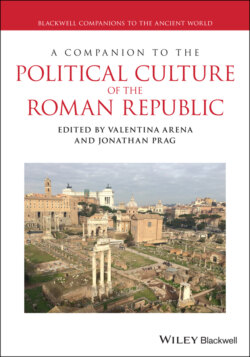Читать книгу A Companion to the Political Culture of the Roman Republic - Группа авторов - Страница 54
NOTES
Оглавление1 1 See Talleyrand 1791: 110, for a similar point, and Robespierre 1799: 230–231.
2 2 Grell 1995 provides a detailed account of the various uses of Greek and Roman culture and sources, and an impressive bibliography of the translations, editions and studies on Roman sources. One should note that the vast majority of scholarship, duly following the eighteenth-century reality (e.g. Diderot 1766: 666; Rousseau 1782: 1.9; Volney 1799), does not specifically distinguish Roman from Greek political cultures. This makes it more difficult, though without preventing one from trying, to isolate specifically Roman republican uses and references.
3 3 Mably 1758: 126–127 and 1751 applies this method to Roman history. In a defence of abbé Raynal’s Philosophical and Political History of the two Indias (Raynal 1781) to which he has collaborated, Diderot (1781: 640) regrets that historians traditionally do not ‘drag the civil and religious tyrants along by their hair’ and candidly claims: ‘the book I love and that kings and courtiers hate is that which awakens the Brutuses’.
4 4 This sentence is put on the title page of Saige 1775.
5 5 Rousseau 1762: 3.9 n., 123-4; see Mably 1758: 119 (a work rightly described as a ‘script for a French revolution’ (Baker 1990: Chapter 4)); and Mandar and Needham 1790: 97.
6 6 See Giargia 2008: 50–57; and Hamel 2014 on Rousseau’s debt to Sidney’s Roman republicanism and Hamel 2019 for the importance of Sidney’s mediation for understanding eighteenth-century republicanism. This raises an important issue for this chapter: dedicated to France, it cannot be tackled in a narrow national context. Ideas circulate: as shown by Hammersley (2005, 2010), most of the major works of seventeenth-century English republicans, who have long been shown to revive Roman republican thinking (e.g. Fink 1945; Pocock 2003 (1975); Skinner 1998), permeated eighteenth-century French political culture via translations and republication at the dawn (Mirabeau/Milton 1788), in the middle (Needham/Mandar 1790), or at the height (Sidney 1793), of the Revolution (Hammersley 2010: 205–207 provides a detailed bibliography; see Chapter 3 on English republicanism).
